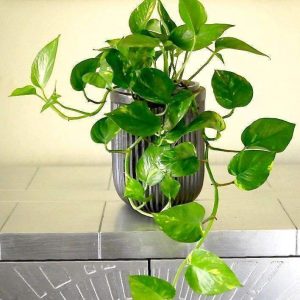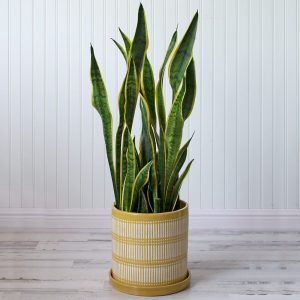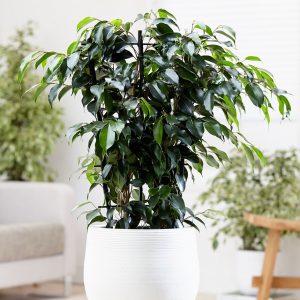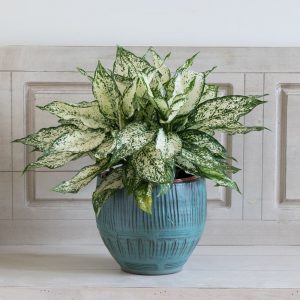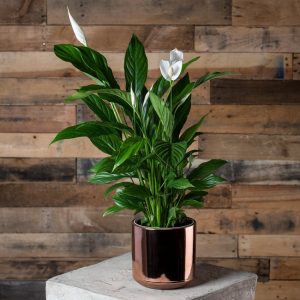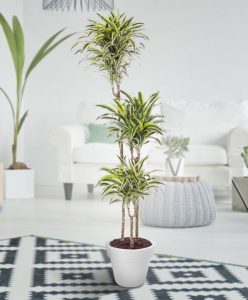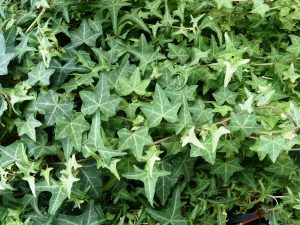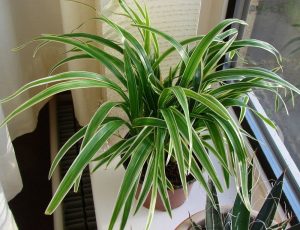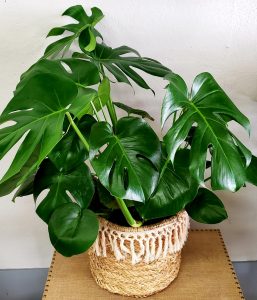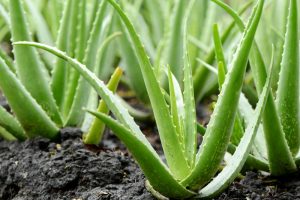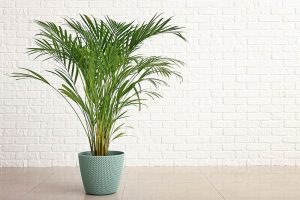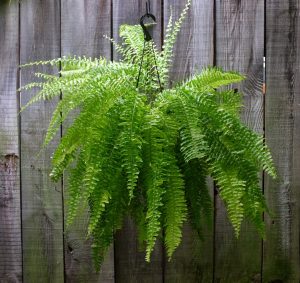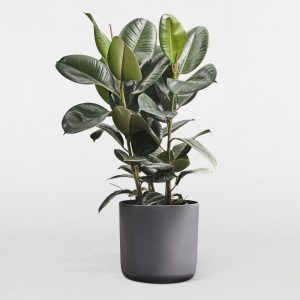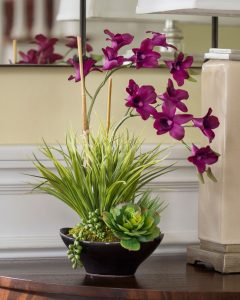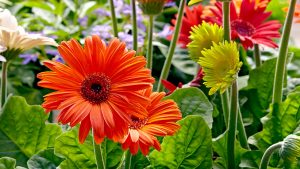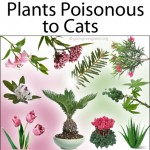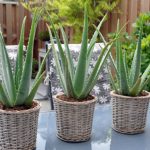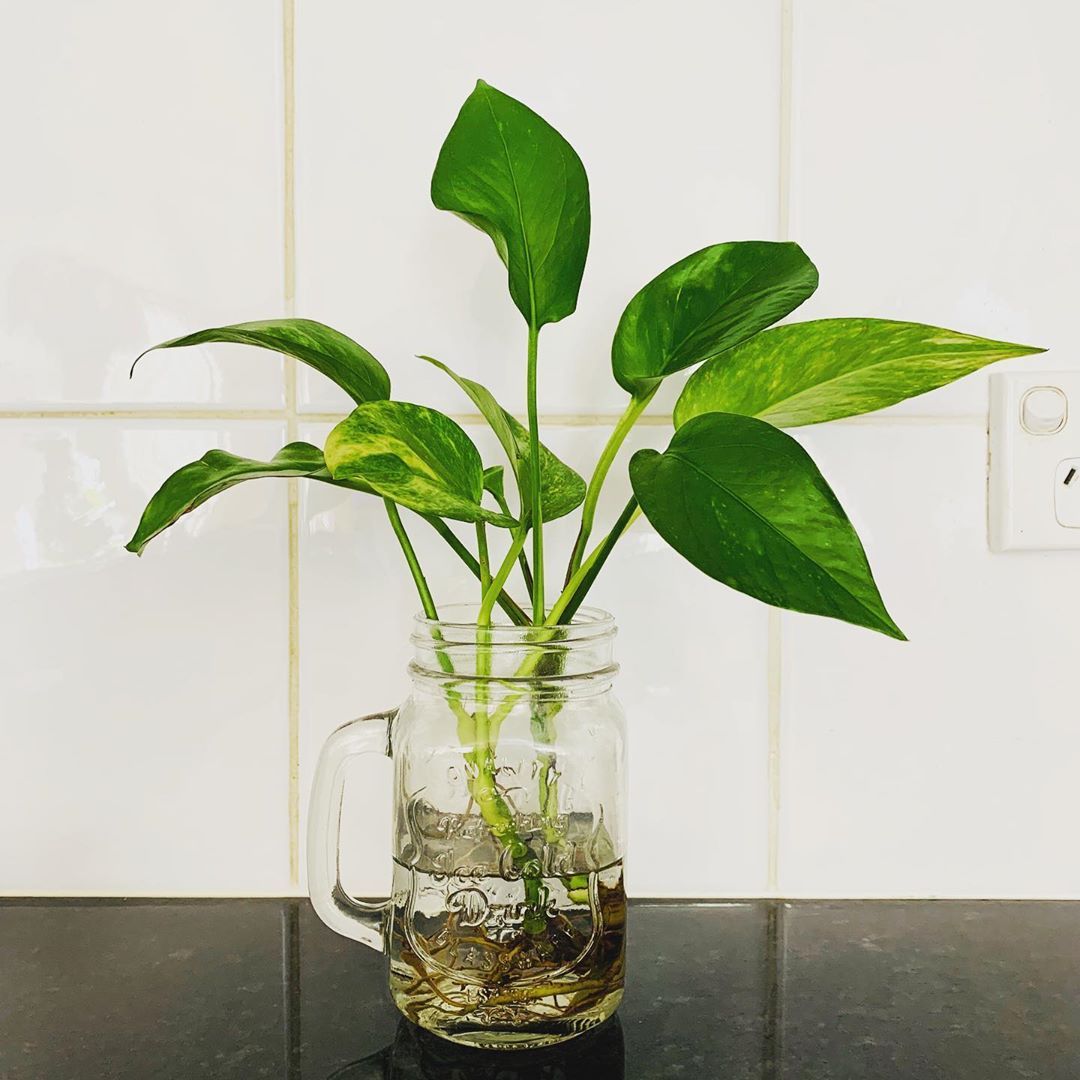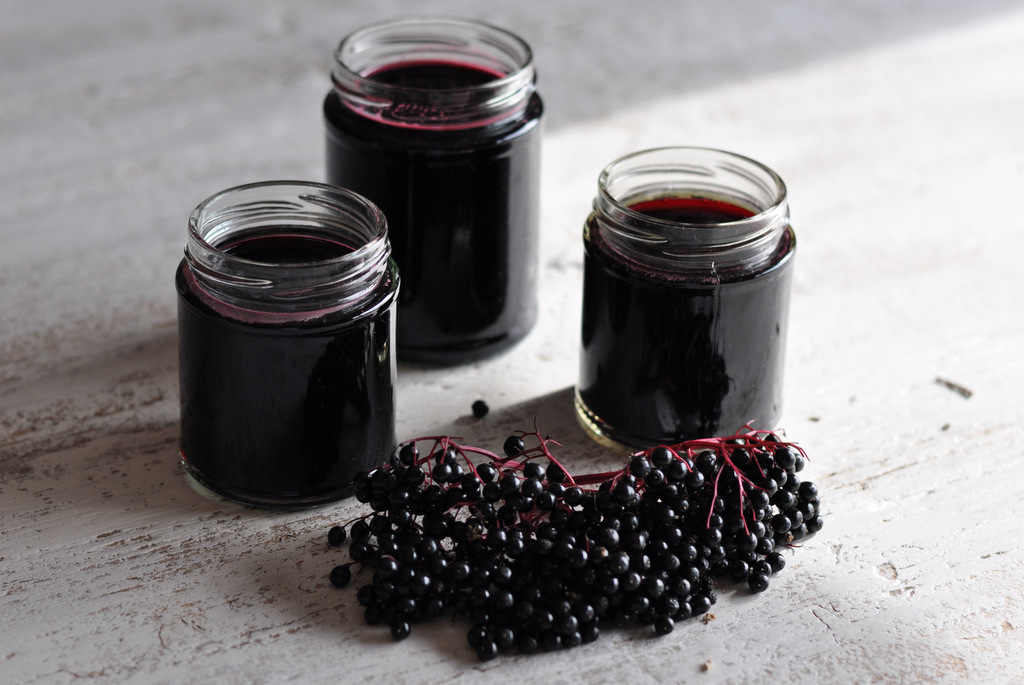15 Best Air Purifying Indoor Plants
Most of us nowadays live in energy-efficient hi-tech modern buildings. People living in prime cities across the world are profoundly affected by hosts of unhealthy pollutants, chemicals and gases. According to the NASA’s Clean Air Study, keeping oxygen-producing houseplants in one’s house can help in removing these potentially harmful air pollutants.
Best Air Purifying Plants for Bedrooms
1. Devil’s Ivy
Devil’s Ivy, also known as the Golden Pothos and the Sweetheart Vine, due to its heart-shaped leaves, is one of the best air purifying low light plants. It is among the most adorable and easy to grow indoor plants that clean the air and remove toxins. It also adds lovely color to our rooms with cascading foliages going down from hanging baskets. It comes in two variants, one is green in color, while the other is variegated.
Plant care: Apply water only when the soil is dry. One can trim the hanging foliages if it gets too big.
Toxins removed: formaldehyde, xylene, toluene, benzene, carbon monoxide, and trichloroethylene.
Light conditions: This is a hardy plant and can sustain low light conditions. The perfect conditions are bright light but not direct sunlight.
Best place to keep: Vastu and Fengshui experts tell, to keep this plant in the South-east direction. Moreover, it can be placed in a bedroom at night, as it continuously produces oxygen, unlike other plants.
2. Snake Plant
Snake plant, also known as Mother-in-Law’s Tongue and Viper’s bowstring, is one the hardest low light air-cleaning plants. It is a succulent variety shrub growing up to two meters in height. It is a very low-maintenance plant and can quickly grow also if neglected. It removes up to 107 known air pollutants from our home.
Plant care: One must never overwater this plant, as they easily survive in dry conditions.
Toxins removed: formaldehyde, trichloroethylene, benzene, xylene, chloroform, carbon monoxide, nitrogen monoxide, and toluene.
Light conditions: Place them for some hours under the sun. If not possible, they can also thrive in extreme low light conditions.
Best Place to keep: Can be placed in the bedroom as it releases an ample amount of oxygen at night. Fengshui tells us to keep this plant on the south-eastern, southern, and eastern parts of the house. It is an excellent example of upward-moving Chi energy, so it efficiently protects one’s home by removing the unwanted negative Chi.
3. Weeping Fig
It originates from the Ficus family. The Weeping Fig gets its unique name from the narrow, arrow-shaped leaves that line up the delicate stems. These plants can quickly grow up to ten feet in height. Thus, one should have an ample amount of space to grow this plant indoors.
Plant care: One can keep the plant in the morning sun for a few hours. Do not keep it in the hot afternoon sunshine. One should give water only when the soil is dry.
Toxins removed: benzene, formaldehyde, and trichloroethylene.
Light conditions: Indirect light and can survive in low light conditions.
Best place to keep: One can keep this plant in the bedroom.
4. Chinese Evergreen
The Chinese perennial plants come from the tropical forests of Asia. These pretty looking colorful plants are one of those indoor plants that clean the air effectively. It is advised to add some water-soluble houseplant fertilizer to your Chinese evergreen, preferably two times a year.
Plant care: One should provide an average amount of water allowing the soil to dry out mostly before next watering. So, once a week, watering is desirable. This plant likes highly damp conditions, and periodic misting with purified water for keeping the leaves glossy.
Toxins removed: benzene, carbon monoxide, formaldehyde, trichloroethylene, and xylene.
Light conditions: The plant can tolerate medium to low light conditions.
Best place to keep: It is advisable to keep the plant in bedrooms, as their big leaves clean more amounts of toxic compounds from the air.
5. Peace Lily
According to the NASA study, Peace Lily, also called the spathiphyllum, is amongst the top three best indoor plants, which effectively removes harmful toxins from our homes. The shiny green foliages make it unique for any corner of the room with low light conditions. It removes mold spores in addition to other toxins, so it can be useful to keep it inside the kitchen or bathrooms. The plant, along with its exquisite white flower enhances the artistic beauty of the house.
Plant care: Once a week, watering is essential. The soil should be kept moist with excessive watering. The brown leaves can be cut off with scissors, caused by extreme heat, dryness or high salty water. Leaves should be sprayed with misty water to keep them clean. A slow-release fertilizer can be given to enhance its growth.
Toxins removed: ammonia, benzene, formaldehyde, trichloroethylene, carbon monoxide and xylene.
Light conditions: The plant requires indirect sunlight. It enjoys low lights, but too little light can restrict its flowers from blossoming. Again one should keep it inside their rooms in the winter season as it loves the warm atmosphere.
Best place to keep: North or West facing windows are the best, as they do not receive direct sunlight throughout the day.
6. Dracaena
A dracaena plant, also known as the Song of India, comes from the asparagus family in 40 different varieties. They often occur in variegated colors of white, red, or cream. The Dracaena Marginata variety can quickly grow up to 15 feet in height, so most suited for big spaces inside the house.
Plant care: One should keep the soil humid but must not over-moist it in summer months once a week watering is vital. Again too much water can decay the roots of the plant. Moreover, purified water should be used and not tap water, which contains fluoride, harmful to the plant.
Toxins removed: formaldehyde, xylene, toluene, benzene and trichloroethylene
Light conditions: The plant can easily survive in indirect light, and even in low light conditions. Again direct sunlight will always burn the leaves.
Best place to keep: North or West facing windows are the best, as they receive indirect sunlight.
7. English Ivy
The English Ivy plant most suited for indoor conditions is an evergreen climber. They look charming in hanging baskets by the side of the windows or even look excellent while climbing or crawling. They can also grow in water with a cutting from a larger plant. Again, one must take precautions in touching them, as the chemicals in the sap can cause dermatitis in humans. The various species offer an attractive look inside the house.
Plant care: The soil should be kept moist, but must not be overwatered, especially in winter months. One can give liquid fertilizers once in two to three weeks, usually during summer months. Water sprays can be given once a week to keep the foliages free from pests and dust.
Toxins removed: benzene, carbon monoxide, formaldehyde, trichloroethylene, molds, and airborne allergens.
Light conditions: Different species require different light conditions, which can be bright, indirect light and also low light places.
Best place to keep: It is one of the best air purifying plants for bedrooms.
8. Spider Plant
The low maintenance air filtering spider plants or the airplane plant removes harmful toxins from the air. Spider plants adjust themselves in any environs and can survive in neglect. They look cool in hanging baskets as they shoot out baby spider plants known as spiderettes dangling down to the ground.
Plant care: Watering can be done two to three times a week, keeping the soil well moistened. One can mist the plant with water regularly to avoid pests.
Toxins removed: formaldehyde, ethylbenzene, carbon monoxide, benzene, nitrogen dioxide, and xylene.
Light conditions: They easily survive in indirect sunlight, and even in low light. They are tolerant of any harsh climatic conditions, even as little as two-degree Celsius.
Best place to keep: The plant is excellent for the bedrooms.
9. Philodendrons
Philodendrons are vines, just like the pothos or money plant. The most common heart-shaped foliage variety gave the name of the plant as Heart leaf Philodendron. These plants are low maintenance air purifying indoor plants, thriving in any harsh condition, and are nearly impossible to destroy. One must keep in mind that the entire plant is toxic, causes swelling if ingested. Therefore it is best to keep this plant in a hanging basket, out of anybody’s reach.
Plant care: One can only give water when the soil seems dry when tapped.
Toxins removed: formaldehyde as well as carbon monoxide and other VOCs.
Light conditions: It does fine with low light or bright light conditions.
Best place to keep: Keep it in any corner of a room, but preferably should be kept hanging, as it is very toxic.
10. Aloe Vera
Aloe Vera is the fleshy variety of air-filtering plants that come the family of cacti. They grow slothfully, having thick juicy pike-shaped leaves. One of the prime advantages of this plant is that it can cure minor cuts, cold sores, and burns with the latex inside its leaves. The green foliages of this plant contain beneficial enzymes, vitamins, amino acids functioning as a perfect anti-bacterial, anti-swelling agent. Again, it treats ailments like psoriasis. Their leaves show brown spots when they absorb an extreme amount of harmful toxins from the air.
Plant care: The plant loves dry conditions. The soil must be let out to be completely dry between watering, as this plant does not survive in stagnant water. The pot should have proper drainage.
Toxins removed: formaldehyde, benzene, and carbon monoxide.
Light conditions: The plants like warm and adequately lighted rooms. They require direct sunlight.
Best place to keep: South-facing windows are the best for this plant. They can be kept inside our bedrooms, as they give out a lot of oxygen at night time.
11. Areca Palm
According to NASA’s list of best indoor plants for clean air, the Areca Palm tops the list. It aptly humidifies the air during the summer as well as in the winter months. Areca Palms, also known as the Butterfly Palm, grow huge nearly six to seven feet in height, so they require bigger spaces in our rooms.
Plant care: This plant requires lots of water during summer times, preferably twice or thrice per week. While in the winter season, they need less quantity of water. Clay-based, slightly moist soil with some slow-release fertilization regularly is required in the case of the summer season. Frequent misting needed to remove insects and to keep the plant clean.
Toxins removed: benzene, carbon monoxide, formaldehyde, trichloroethylene, xylene, and toluene.
Light conditions: The plant grows well in bright indirect light or filtered light.
Best place to keep: It can be kept inside our bedrooms, as it also releases ample amount of oxygen at night. South or west facing windows are the best for some direct sunlight.
12. Boston Fern
Boston fern ranks the highest among other air purifying indoor plants in effectively removing formaldehyde from the air. The plant grows up to four feet in height while spreading up to five feet. One should keep it in hanging baskets, with its lovely feathery ferns spreading out from the basket.
Plant care: One should keep the soil slightly moist and mist the plant with warm water. Again, the plant requires soapy water sprays to deter spider mites, whitefly, and aphids, which often attack this fern.
Toxins removed: VOCs like formaldehyde, trichloroethylene, toluene, xylene, and benzene.
Light conditions: requires indirect sunlight and a cool location with high humidity.
Best place to keep: Stack this plant in the bedroom and spaces which get filtered light.
13. Rubber Plant
These indoor plants that clean the air and remove toxins are the sturdiest evergreen variety from India. It is related to the weeping fig plant, as they both come from the fig family. The roots of this plant grow upwards around the plant’s trunk forming impressive shapes. They should be grown in large pots and straight from the ground. It is a very tolerant plant flourishing at temperatures as low as 50OC, but for a short time. The ideal climate is around 16 to 27 degrees.
Plant care: Water can be given weekly in the summertime to keep the soil moist. Whereas, in the winter season, watering can be done once in 15 days. Occasion trimming of the foliages is necessary. Additionally, during the summer months, one can give mixed liquid compost with water. One should refrain from overwatering, and let the soil to dry out completely.
Toxins removed: carbon monoxide, formaldehyde, trichloroethylene, xylene, and benzene.
Light conditions: These plants like bright and filtered light. They endure dim lighting conditions but prefer partial sunlight and mild shade. Direct sunlight, generally in summer, must be avoided at any cost.
Best place to keep: Unlike other plants, these houseplants give off oxygen at night, so they are great for bedrooms.
14. Orchids
Orchids, especially the Dendrobium Phalaenopsis variety or the stalk orchids originate from Australia and Southeast Asia. The plant survives well in neglect; actually, over caring might also kill this exquisite flora. These plants clean the air by circulating bountiful of oxygen to make us relax, hence lowering the risks arising from stress, panic attacks, and inadequate sleeping patterns.
Plant care: One should water once a week during the winter season, whereas twice a week in summer months. The size of the container or pot will also determine the amount of water to be given. Usually, a 6-inch pot requires watering every seven days, while a 4-inch pot needs water once in 5 to 6 days. These plants bloom naturally throughout the spring season.
Toxins removed: xylene, acetone, and chloroform.
Light conditions: These plants grow the best in direct bright light. One should remember that keeping them in shades will restrain them from going straight up.
Best place to keep: It is quite sensible to keep them in bedrooms, as they produce oxygen at night, although in a small portion. Orchids improve sleeping quality, and the air remains free of harmful VOCs.
15. Gerbera Daisy
Gerbera Daisy, also known as Orange Gerbera or African Daisy, is a beautiful perennial plant originating from South Africa. These florae have vivid and vibrant flowers in a unique tinge of orange, pink, yellow, and red. Among other attractive mixed colors are amber-orange, coral-pink, lavender-purple, pink, purple-pink, red-purple, salmon, violet, and white. These air-cleaning plants for bedroom usually reach one foot in height, while their leaves can grow 20 inches in length.
Plant care: These rare floras require well-drained soil fortified, preferably with an organic fertilizer. Vital care of the plant consists of regular watering. One should take caution of not overwatering or under watering them. Spraying with neem-based spray is the key to remove all pest problems like fungus, whitefly, aphids, and spider mites.
Toxins removed: formaldehyde, benzene, trichloroethylene, and carbon monoxide.
Light conditions: As they favor open-air conditions they can be kept in the North for direct sun, whereas, it is better to place them in partly shades in the South direction. For best results, try to place it under the sun on alternate days.
Best place to keep: This exclusive flower releases high amounts of oxygen at night. So, it is appropriate to house them in the bedrooms. They can effectively cure anyone affected by sleep and respiratory disorders.
Conclusively we can tell that these indoor plants have demonstrated their potential in filtering out the noxious indoor air pollutants. Eventually, these natural air purifiers are indispensable for every household. They act as a powerhouse in generating high volumes of oxygen day and night, thereby improving the overall psychological well-being of a person.
Popular
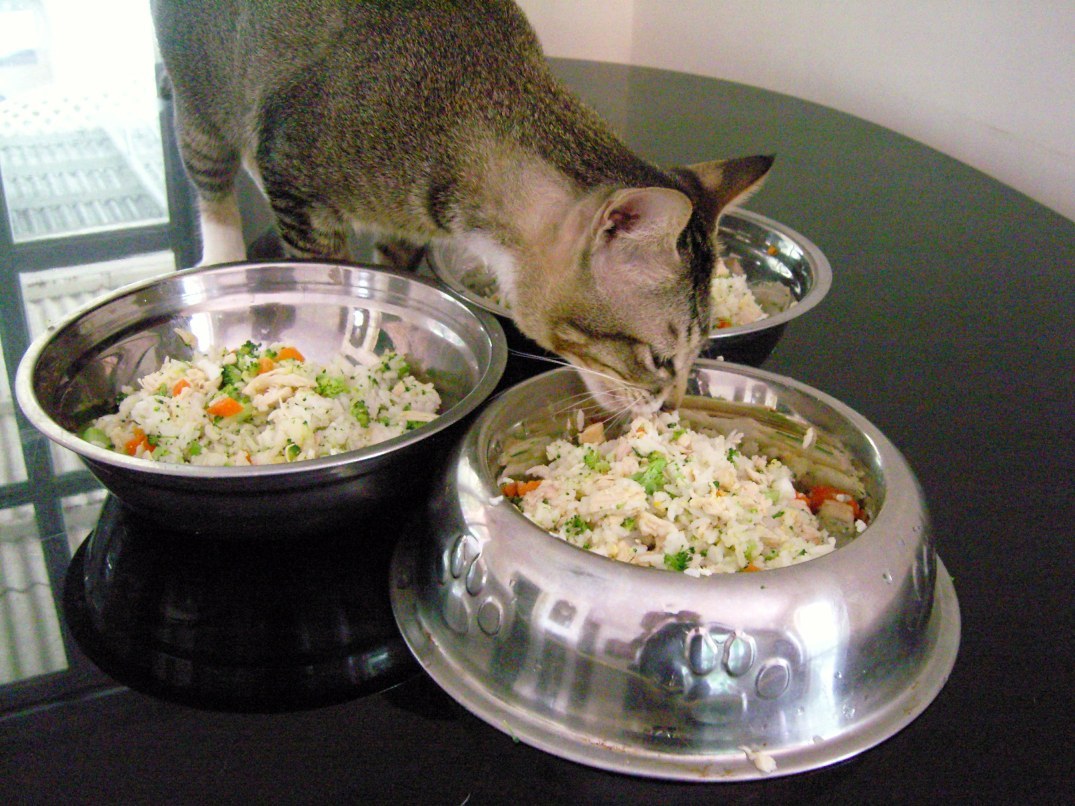 DIY: Healthy Homemade Cat Food Recipes
DIY: Healthy Homemade Cat Food Recipes
Give occasional treats to your loving pet cat with the best nutritious homemade dishes, rather […]
 How to Lighten Hair Naturally
How to Lighten Hair Naturally
Best homemade recipes for making your own natural hair lighteners! Try making your own hair […]
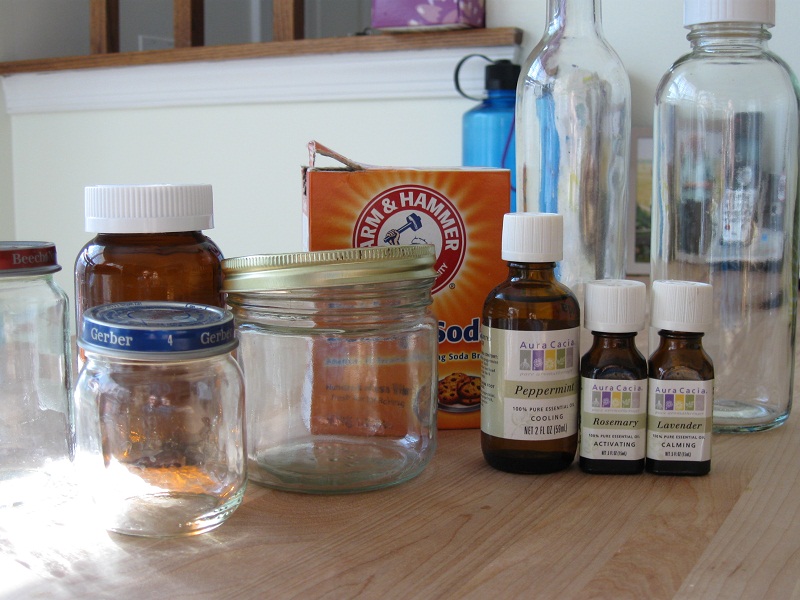 9 Best Homemade Natural Mouthwash Recipes
9 Best Homemade Natural Mouthwash Recipes
Smile more; talk more to your friends confidently trying these mouthwash recipes! Bad breath is […]
Prepare your own tooth powder at home for healthy gums and teeth. The recipes given […]
As the name suggests, wool dryer balls serve the same purpose as plastic PVC or […]

